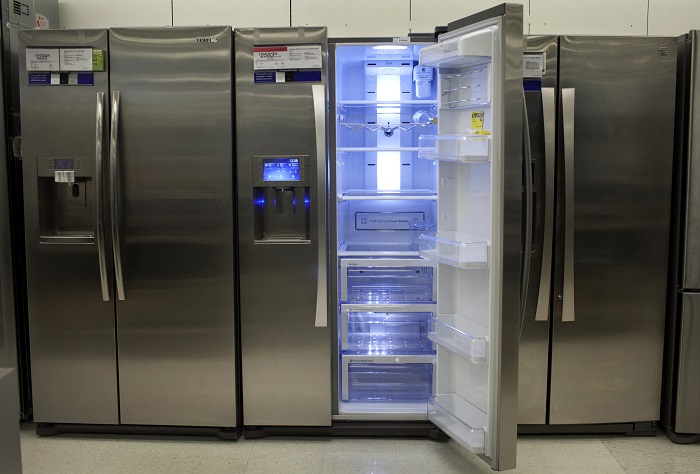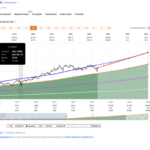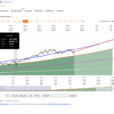
Sales of appliances made by manufacturers such as Whirlpool Corp. and Electrolux AB are poised to rise this year as Americans replace aging machines.
Consumers may be willing to buy these types of big-ticket items again as a confluence of economic indicators — including hiring gains and improved confidence — suggests homeowners will unleash some pent-up demand to improve their residences, “an asset they see as growing in value,” said Russell Price, senior economist at Ameriprise Financial Inc. in Detroit.
Spending on major household appliances — which include refrigerators, washers and dryers — fell 1.7 percent in March from a year ago to a seasonally adjusted annual rate of $38.7 billion, Commerce Department data show. That represents 13.5 percent of total expenditures on furnishings and durable household equipment, compared with 14.7 percent in the year preceding the 18-month recession that began in December 2007.
The long-term trend is “very telling” because almost five years after the recession ended, sales still are sluggish, Price said. “It’s somewhat surprising, in part because there’s been a rebound in housing turnover,” and many homeowners purchase large appliances to attract potential buyers.
Sales of existing single-family residences have risen 32 percent from a July 2010 low to a 4 million seasonally-adjusted annual rate in March, according to data from the National Association of Realtors. That compares with an average of almost 3.9 million in the 30 years before the economic slump.
Rising Sentiment
Sentiment, as measured by the Bloomberg Consumer Comfort Index, rose to 37.9 for the week ended April 27, the second-highest level since January 2008. U.S. employers added 288,000 workers to payrolls last month, the biggest gain since January 2012, Labor Department figures show.
Such improvements are starting to “line up,” which bodes well for the industry, said David Macgregor, an analyst for Longbow Research in Independence, Ohio. There’s “a lot of replacement demand building up in the market.”
The late 1990s and early 2000s saw innovations — including front-loading washing machines and refrigerators with French-style doors — that helped spur sales. After “massive installation” in 1997-2005, many appliances now are due for replacement, he said. “What that tells you is it’s time to buy Whirlpool and Electrolux.”
‘Pure Plays’
Whirlpool brands include its namesake, KitchenAid, Maytag and Jenn-Air; Electrolux has its namesake, Eureka and Frigidaire. Macgregor maintains buy recommendations on both companies, among the industry’s only “pure plays,” he said.
Whirlpool — which closed at $149.38 yesterday — is trading at about 12 times earnings on a forward-looking basis, compared with 16 times for the Standard & Poor’s 500 Index, Macgregor said, adding that its valuation is cheap compared with peers and historic levels.
As sales of existing single-family homes rose toward a September 2005 peak, so did purchases of large appliances, before bottoming in 2012, Marc Bitzer, president of Whirlpool’s North America and Europe, Middle East and Africa regions, said in a phone interview. The Benton Harbor, Michigan-based company forecasts industry demand will grow 5 percent to 7 percent in 2014, which is poised to be “another year of solid recovery.”
That’s largely because so-called planned purchases — driven by new construction and remodeling activity — are “coming back significantly,” Bitzer said. These make up about 40 percent of large appliance sales, down from 50 percent prior to the recession, and often have a higher price point, he said.
Kitchen Treat
“People are gaining more confidence about the economic future but maybe not enough to buy a new home, so they treat themselves to a new kitchen,” Bitzer said.
The recovery in large machines trails that of smaller ones. Spending on small electric household appliances including coffee makers and blenders rose 3.1 percent in March from a year ago to an annualized $6.2 billion, Commerce Department figures show. Such purchases accounted for about 2.1 percent of home-related expenditures, up from 1.8 percent in the 12 months before the recession began.
Sales of these goods are less cyclical, partly because they aren’t as expensive, Macgregor said. Smaller machines often are purchased as gifts and aren’t used every day, so they have a different replacement cycle than larger ones, he added.
Read more: Appliance Sales Could Rise as Americans Upgrade: EcoPulse
















